Hugo BachegaMiddle East correspondent, Jerusalem and BBC Visual Journalism team

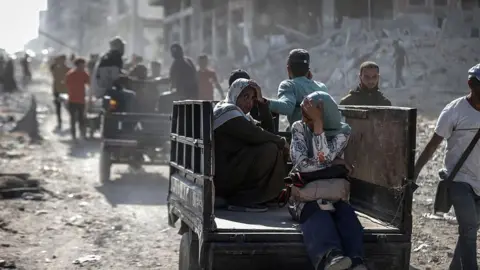 Getty Images
Getty Images
A ceasefire has come into effect for the war in Gaza, after the Israeli government approved a US-brokered deal with Hamas in negotiations that had the personal involvement of US President Donald Trump.
The full text of the agreement has not been made public - but part of it has been published by Israeli media.
It appears to lack details and in some cases is vague and ambiguous - perhaps on purpose.
Even its title, "Implementation steps for President Trump's proposal for a comprehensive end of Gaza War", leaves room for different interpretations.

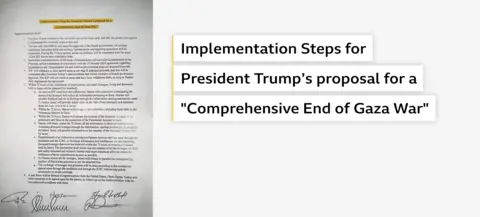
The full title suggests these are steps for the implementation of the 20-point plan that President Trump announced at the White House last week. The document was agreed after negotiations in Egypt over the first phase of the plan, related to a ceasefire, a hostage and prisoner exchange, and a surge in humanitarian aid.
However, by highlighting "Comprehensive end of Gaza war", the document appears to be announcing the end of the two-year-old war.

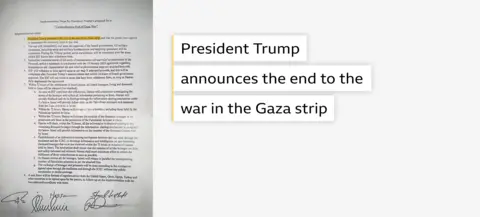
This paragraph explicitly says the war is over, which sets the scene for future discussions on later stages of the president's plan for Gaza. It appears to suggest that, even if the negotiations reach an impasse, hostilities will not resume.
This is crucial as key sticking points remain, including the Israeli demand for Hamas to disarm, the scale of the Israeli withdrawal, and a plan for who will govern the territory. The document does not mention guarantees that could have been given that the conflict will not restart, or what could happen if either side returns to fighting.
Speaking after the deal was reached, Hamas's exiled Gaza leader, Khalil Al-Hayya, said he had received assurances from the US and other mediators that the war had ended.
Meanwhile, the Israeli Prime Minister Benjamin Netanyahu has not publicly said that the conflict is over. Following the approval of the deal by the Israeli government, Netanyahu released a video in which he appeared to threaten to use force if Israel's demands, including Hamas's disarmament, were not met. "If this is achieved in the easy way, it's all for the better. And if not, it'll be achieved the hard way," he said.
The document does not mention the next steps for the full implementation of Trump's plan.

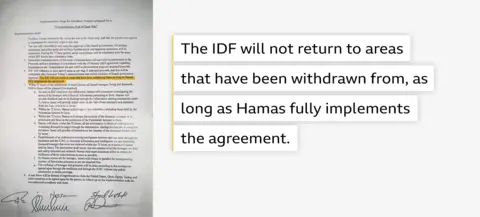
This appears to leave room for a return of Israeli troops to areas they had withdrawn from if Hamas is seen as not being fully compliant with the deal. It provides no details about what could constitute a violation.
And the text does not explicitly rule out air strikes. Prior to the deal, Hamas officials were concerned that there would be a situation like the one in Lebanon, where a ceasefire deal has not prevented near-daily air strikes on people and targets Israel says are linked to Hezbollah, the Shia militia and political movement. The Lebanese government says Israel's actions are violations of the deal, which was also brokered with US help.

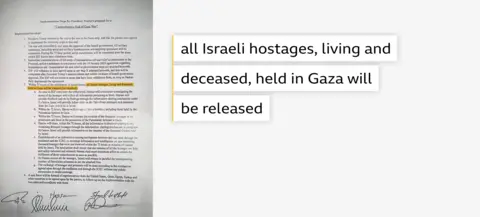
Despite the demand that all hostages, alive and dead, should be freed within 72 hours of the partial Israeli withdrawal, the text concedes, although not explicitly, that Hamas is unlikely to be able to retrieve all bodies from deceased hostages within that timeframe, allowing the group to share the information it had gathered about those that could not be located.
The text does not say what could happen in case of delays in freeing the 20 captives believed to be alive.

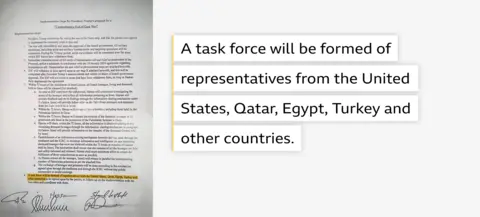
This suggests the creation of a mechanism to monitor the deal and report any violations.
US officials said separately that the US was moving up to 200 troops already based in the Middle East to co-ordinate the multination force.
Assuming the hostage and prisoner exchange is completed, the officials said the intention was for a so-called International Stabilisation Force to be built, although this was yet to be agreed between the sides.
Next phase of deal unclear
This deal is a significant diplomatic breakthrough led by Trump, who wants to be remembered as the one who brought the conflict to an end.
The president employed American leverage to force Netanyahu, who has been accused of sabotaging earlier efforts for a deal, to engage with the negotiations.
Hamas came under pressure from Egypt, Qatar and Turkey, and from a population in desperate need of help.
Israel launched the war in response to the Hamas attacks on 7 October 2023, when around 1,200 people were killed, mostly civilians, and 251 were taken hostage.
Israel's military campaign has killed more than 67,000 Palestinians, mostly civilians and including more than 18,000 children, according to the Hamas-run health ministry, and led to a catastrophic humanitarian crisis.
The first phase of the president's plan was, perhaps, the easiest one. Netanyahu was also facing growing domestic pressure, with polls consistently suggesting that the vast majority of Israelis wanted a deal with Hamas and the end of the war. Hamas, meanwhile, was apparently convinced that keeping the hostages had become a burden, giving Israel a reason to continue fighting.
What happens next, however, is not clear. Progress will only happen if the Trump administration remains engaged, as both Israel and Hamas have reasons to stall the process. There is momentum, but major obstacles remain.
.png)
 2 months ago
12
2 months ago
12




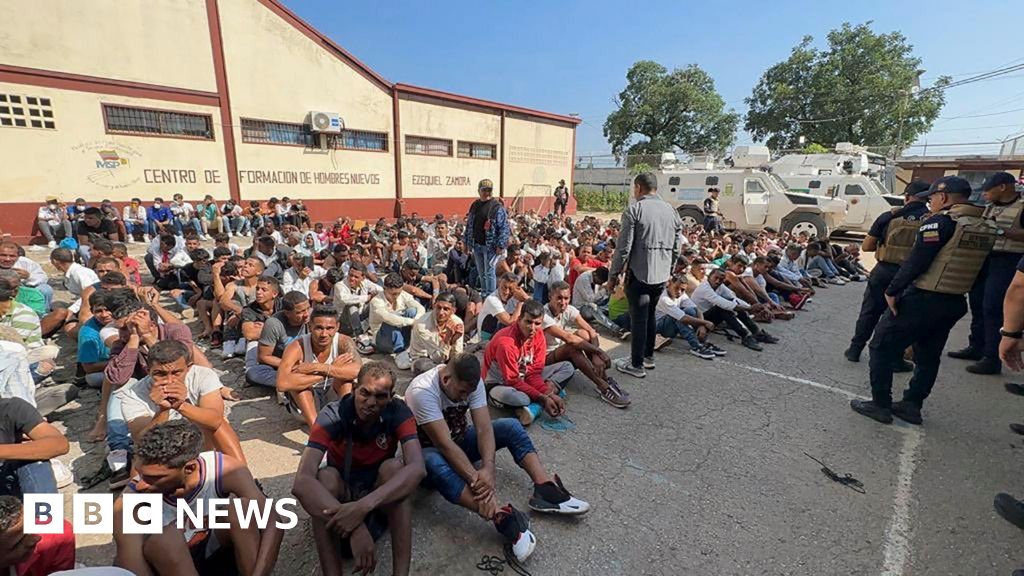

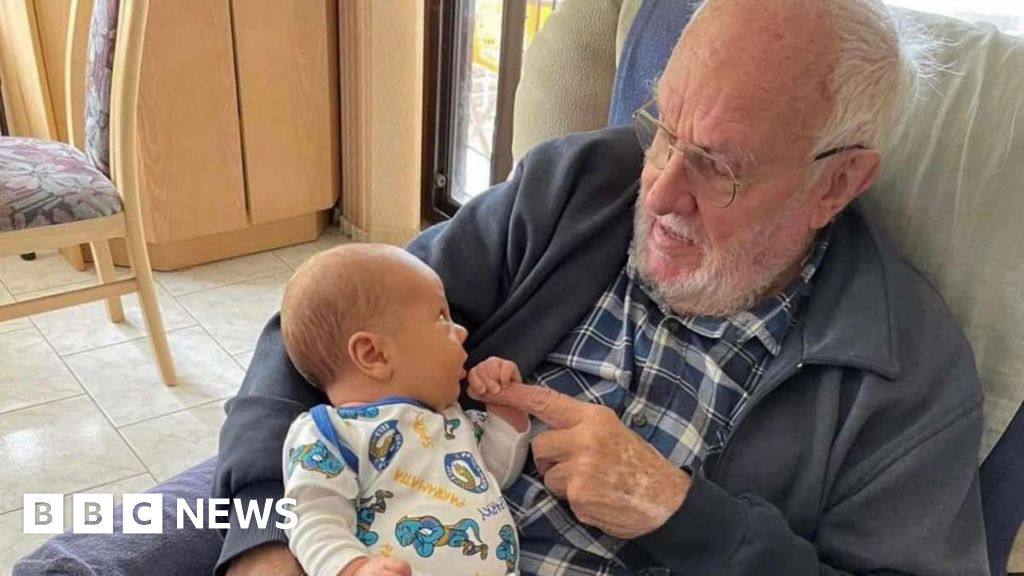

 English (US) ·
English (US) ·